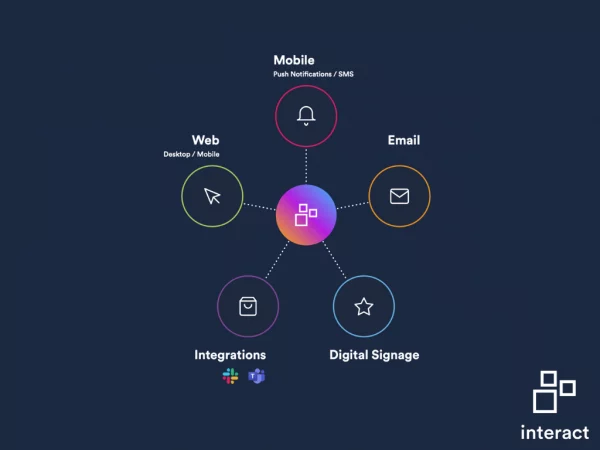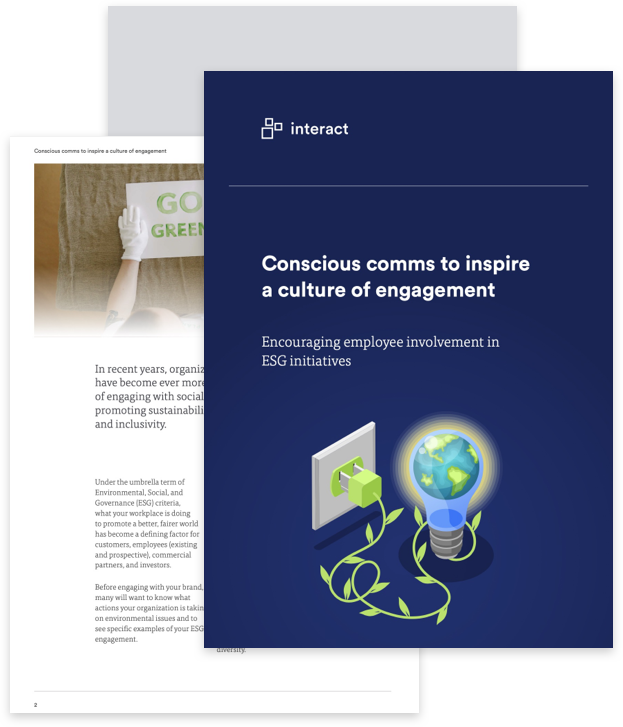September marks the return from the summer break, but with reports that many employees in the education sector aren’t exactly enthused, we look at how intranet software can help to improve internal communication in higher education.
While the education system shapes the minds that will go on to innovate in technological and ideological ways, the systems and processes that are used to run education institutions can often be archaic and fragmented. This can result in challenging workplace cultures and environments for those working in the education system and in turn, this can make it challenging to provide students with the best levels of support.
One extensive study of digital maturity in universities found that just one third of tech professionals in higher-education institutions were confident their data supported decision-making and improving student outcomes, while only a quarter regularly utilized data analytics.
Poor internal communication in higher education can also be a major contributing factor to the significant staffing challenges the sector currently faces; work culture/environment was cited by education workers as one of the top three major factors causing them to leave their roles according to a poll conducted in May 2022.
While internal communicators in higher education cannot be expected to solve systemic issues that contribute to labor shortages, they can help to improve the employee experience and transform the culture and environment for education-sector workers.
Your free guide to ESG communications
With the right internal communications strategy in place – and the software to support it – communicators in the education space can help to improve two-way communications, community building, collaboration, and the support that education staff can provide to students and to each other.
In turn, each of these improvements to the employee experience can help to reduce attrition. When the workplace culture is enhanced in each of these areas, it can also help to attract enthusiastic candidates to fill roles, and improve the onboarding experience.
As a communicator, the thought of overhauling the workplace culture and employee experience may be an overwhelming one. Yet, whether you’re going it alone or working as part of a team, instilling changes to your comms strategy that will improve employee satisfaction and support retention can be a lot more straightforward than you think – especially with the right intranet software in place.
Mastering internal communication in higher education with Manchester Metropolitan University

At Interact, our mission to help organizations inform and connect their greatest assets – their people – has allowed us to work with communicators in many different sectors, including education.
Manchester Metropolitan University (MMU) is one such customer. With over 5,000 staff and close to 40,000 students across five faculties and 13 research centers, MMU is a large organization with a need for a unified workplace culture.
The university’s internal communications platform has evolved from an ailing WordPress site that served as a simple news channel that failed to meet employees’ needs for better access to news updates, easily findable policies and procedures, and better opportunities to connect with colleagues, to a bespoke Interact-powered intranet that delivers on those employee demands and has achieved an impressive active user score of 97%.
A user-led approach to internal communication in higher education
When we talk to organizations and enterprises about the most effective ways of designing and launching a successful intranet, we recommend taking time to understand users’ needs. This ensures that the resulting intranet will solve pain points in the digital employee experience that are unique to the organization, rather than creating additional points of friction.
Your free guide to ESG communications
MMU followed this process and asked users where they would expect to find different types of content. The responses the university gathered from its employees then informed how its new intranet would be navigated, with content stored in the places users believe it should be found, and labeled so that it is easy to find with Interact’s intuitive enterprise-grade search functionality.
Breaking through departmental siloes
Facilitating connections and encouraging collaboration and knowledge sharing can be difficult with a heavily siloed structure for organizing information and content, which is why our own intranet experts often advise against it. MMU agreed with this ethos, having struggled with the department-based structure of its public website.
The vision for a global approach to navigating the content and information that would be housed on its intranet was realized by allowing every employee to access everything via a floating top banner menu that splits the content into easily navigable categories and sub-categories. This includes:
- ‘Our University’ which provides details of MMU’s strategy and university-wide projects
- ‘News’ for all the latest news from university departments
- ‘Working here’ and ‘How do I?’, covering practical information such as guidance, policies, and general support
- The menu also includes an ‘A-Z’ tab, which presents users with content that is frequently accessed
Connecting staff to drive better student outcomes
In a large and complex organization like MMU, it can be beneficial to have a People Directory that presents more detail than each individual’s name and job title. MMU’s People Directory helps colleagues to identify common interests, areas of expertise that can aid collaboration, and encourages connections by displaying work contact details, location, expertise, and interests.
The intranet people directory also allows users to click through to a full profile where they can read a short introductory biography written by the employee. They can also view blog posts and recent intranet activity, whether that’s comments they have left on other users’ posts, or recognition for others that they have shared on the platform.
Your free guide to ESG communications
MMU has also leveraged the stronger connections it has built with its staff through its intranet to improve engagement in its annual student survey.
The survey is crucial to helping MMU understand where it can improve; information that helps it work towards better results in the annual university league table results. To drive engagement in the survey, ‘toolkits’ were hosted and shared on the intranet to help staff promote, inform, and answer questions from students ahead of the survey deadline. This led to the university recording its strongest uptake in survey participation from its students.
Evolving to overcome internal communication challenges in higher education
One of the benefits of investing in independent intranet software is the stream of new features that are continually worked on, introduced, and refined.
Some of the latest features Interact has introduced directly address growing communication challenges in large organizations and educational institutions, such as reaching every employee with information that is relevant to them. This is where our software’s multichannel communication capabilities can be instrumental in ensuring content reaches your intended audience through each user’s preferred channel and helps to ensure they receive automated recommendations for content that will interest them.

Another common challenge is communicating with frontline or non-desk staff. Whether we’re talking about fully deskless staff such as maintenance workers, or partially deskless staff such as tutors and lecturers who don’t always have a digital device to hand, Digital Signage in faculty areas can display a continuous feed of news and information.
It’s not uncommon for comms teams to encourage other employees to create and share comms they have authored themselves on the intranet. This is a great way for subject matter experts to share knowledge and generate engagement, and this is where our CMS editor with integrated AI-powered content analysis helps employees outside of the comms team create communications that look professional and are both engaging and inclusive.
A framework for the future

The factors that impact the employee experience in higher education are continually evolving and in these complex and busy environments, taking every measure possible to communicate effectively with staff and provide them with the resources and support they need is essential. This is where intranet software is helping organizations like Manchester Metropolitan University make a positive shift toward the future of internal communications. The more educational institutions that follow in their footsteps, the better both the employee and student experience will be.


